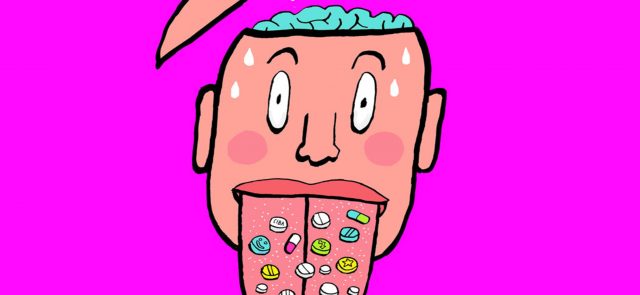
1.1 MDMA: History
MDMA colloquially known in its unregulated form as – ecstasy in Europe and as molly in the USA is a small, amphetamine-like molecule that has had a rollercoaster reputational ride, from being positioned as a promising new therapeutic tool to being branded a brain-damaging recreational drug. Most of those historic fears were overstated, and recent empirical research, especially into the treatment of post-traumatic stress disorder (PTSD) and related conditions, is now bringing MDMA back into the medical fold. In this issue of Nature Medicine, Mitchell et al. report the first phase 3 study of MDMA, which reveals significant efficacy and an excellent safety profile in people with severe PTSD. It now seems likely that it will be an approved medication in a few years.
MDMA was invented by Merck in 1912 as a precursor in a new synthesis for hemostatic substances; Merck tested MDMA in animal models in 1927 and in 1959 but found nothing of interest. It was then resurrected by Alexander Shulgin in the 1970s, when he self-experimented with a range of phenylethylamine drugs. MDMA stood out as being different from other related compounds, as it provided greater clarity of thought and empathy with others. Shulgin introduced it to his wife, who was a psychotherapist, and she agreed it had therapeutic potential, particularly for couples counseling. The Shulgin’s made it available to other therapists in the USA, who found MDMA helpful in breaking down the hostile tensions and frictions that build up in many partnerships. For these reasons, MDMA became known as the “empathy” drug.
- At that time in the 1970s, MDMA was legal, and this led to its downfall. Dealers realized that it was a legal alternative to amphetamines and cocaine, so they started to sell it and sought to enhance its market value by calling it “ecstasy”.
- Its unique pro-social effects made it especially attractive at mass musical gatherings (raves), and it apparently lacked the problems of aggression and violence associated with other drugs such as alcohol or stimulants. The rave scene was less troublesome than traditional drunken gatherings from a policing point of view; however, the use of MDMA in public contexts attracted the attention of politicians while US President Reagan and his wife Nancy were ramping up the war on drugs.
1.2 MDMA: Overview
Pharmacologically, MDMA resembles amphetamines, but it has a greater impact on serotonin. MDMA is also an agonist of the 5-HT2 family of serotonin receptors. Enhanced serotonergic function may explain its “empathogenic” effects, achieved either directly or indirectly by increasing levels of oxytocin, which is known to be involved in social function and which a recent rodent study suggests may open a critical window in cortical functioning, allowing learning of new behavioral responses.
At the psychotherapeutic level, MDMA facilitates exposure therapy. It is the sudden, reflex re-emergence of the emotions that were present during the initial trauma that makes PTSD so distressing. Therefore, current treatments aim to reactivate and then extinguish this emotional memory. In healthy volunteers, MDMA reduces the impact of negative memories, whether they are autobiographical or induced by negative stimuli encountered as part of a controlled study, consistent with its therapeutic value. Human neuroimaging has provided a plausible mechanism for this effect, whereby MDMA suppresses activity of the amygdala in response to negative stimuli. MDMA also enhances social connections and thus facilitates the therapeutic process in this aspect.
1.3 MDMA: Further Implications
Overall, more needs to be done to convince the medical community, regulatory agencies and the public of the efficacy and safety of MDMA. The many mistruths perpetuated about this drug as well as its current Schedule I classification (applied to drugs with a strong potential for abuse and no accepted medical use) serve only to fuel fears about its harm and addictive potential, which greatly limits its accessibility. The new evidence supports the efficacy and safety of MDMA after just a few exposures at a relatively moderate dose, without signs of tolerance or dependence.
MDMA treatment gives hope and excitement to a field in which outcomes have been historically very poor. Rescheduling MDMA to a lower level of restriction in the UK and USA would greatly accelerate research and make it more accessible to those in need; the World Health Organization and United Nations should consider doing the same.


